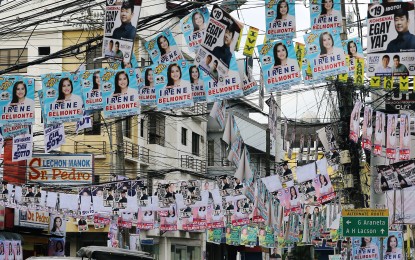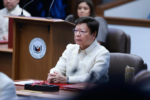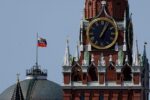Be informed: Lawful election propaganda, common poster areas

MANILA – Aspiring for an elective public position can be tricky and sometimes expensive, especially when persuading voters to know you and your platforms through massive campaigning and the use of lawful election propaganda.
The beginning of one’s political journey starts with becoming a candidate — which refers to any person seeking an elective public office position.
It will be followed by the use of campaign and election propaganda which include the following:
Forming organizations, associations, clubs, committees, or other groups of persons for the purpose of soliciting votes and/or undertaking any campaign for or against a candidate;
Holding political caucuses, conferences, meetings, rallies, parades, or other similar assemblies, for the purpose of soliciting votes and/or undertaking any campaign or propaganda for or against a candidate;
Making speeches, announcements or commentaries, or holding interviews for or against the election of any candidate for public office;
Publishing or distributing campaign literature or materials designed to support or oppose the election of any candidate; or
Directly or indirectly soliciting votes, pledges, or support for or against a candidate.
Under Section 80 of Article 10 of the Omnibus Election Code (OEC), an election campaign or partisan political activity must be done only within the campaign period. Political parties may hold political conventions or meetings to nominate their official candidates within 30 days before the commencement of the campaign period and 45 days for Presidential and Vice-Presidential elections.
What’s unlawful, what’s not?
The Comelec’s “Oplan Baklas” operations allow the commission to take down oversized and illegally placed campaign materials.
The operations were toned down a bit after the Supreme Court issued a temporary restraining order (TRO) over dismantling campaign paraphernalia posted on private properties.
But as the law states, campaign materials become illegal when are posted in restricted public areas and when bigger than the prescribed by the OEC.
Legal election propaganda includes pamphlets, leaflets, cards, decals, stickers, and other written or printed materials of a size not more than 8.5×14-inches.
The Fair Elections Act ruled that no campaign material should exceed 2×3-feet whether handwritten or printed letters urging voters to vote for or against any particular candidate.
Cloth, paper, or cardboard posters, whether framed or posted, with an area exceeding 2×3-feet, except that, at the site and on the occasion of a public meeting or rally, or in announcing the holding of said meeting or rally, streamers not exceeding 3×8-feet in size are allowed.
However, these streamers can only be displayed one week before the date of the meeting or rally and should be removed within 72 hours.
All other forms of election propaganda are not prohibited by this Code as the Commission may authorize after due notice to all interested parties and a hearing where all the interested parties were given an equal opportunity to be heard, provided that the Commission’s authorization shall be published in two newspapers of general circulation throughout the nation for at least twice within one week after the authorization has been granted.
The OEC also prohibits the removal, destruction, defacement, and prevention of the distribution of lawful election propaganda.
Any newspaper, newsletter, newsweekly, gazette, or magazine advertising, posters, pamphlets, circulars, handbills, bumper stickers, streamers, a simple list of candidates, or any published or printed political matter for or against a candidate or group of candidates to any public office shall bear and be identified by the words “paid for by” followed by the true and correct name and address of the payor and by the words “printed by” followed by the true and correct name and address of the printer.
It is prohibited to erect, put up, make use of, attach, float or display any billboard, tinplate poster, balloons, and the like, of whatever size, shape, form, or kind, advertising for or against any candidate or political party.
It is also not allowed to purchase, manufacture, request, distribute or accept electoral propaganda gadgets such as pens, lighters, fans of whatever nature, flashlights, athletic goods or materials, wallets, shirts, hats, bandanas, matches, cigarettes, and the like.
However, the campaign supporters accompanying a candidate are allowed to wear hats and/or shirts or T-shirts advertising a candidate.
Political advertisements or propaganda through cinematography, audio-visual units, or other screen projections is prohibited except for telecasts which may be allowed as hereinafter provided.
Any radio broadcasting or television station is not allowed to sell or give free air time for campaigns and other political purposes except as authorized in this Code under the rules and regulations promulgated by the Comelec.
Also, any foreigner, whether a judicial or natural person, is not allowed to aid any candidate or political party, directly or indirectly.
Foreigners taking part in or influencing any election manner, or contributing or making any expenditure in connection with any election campaign or partisan political activity shall be unlawful.
Any prohibited election propaganda or advertisement shall be stopped, confiscated, or torn down by the representative of the Commission upon the specific authority of the Comelec.
Thus, all candidates must ensure their campaign materials are posted in common poster areas as prescribed by the Commission. (PNA)





